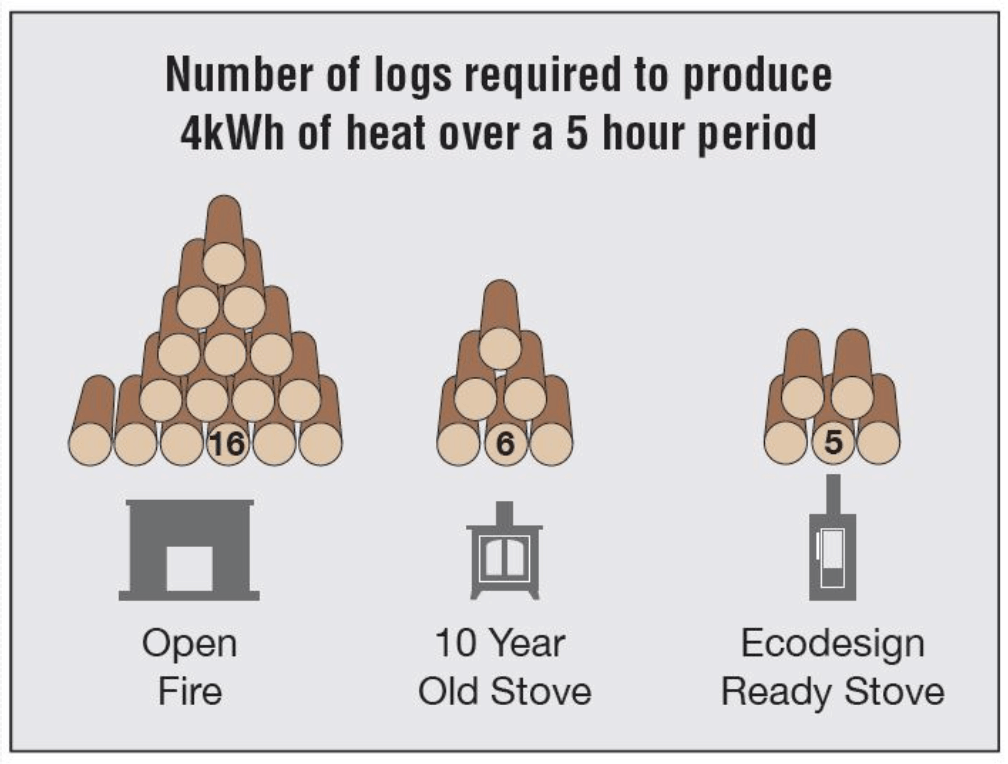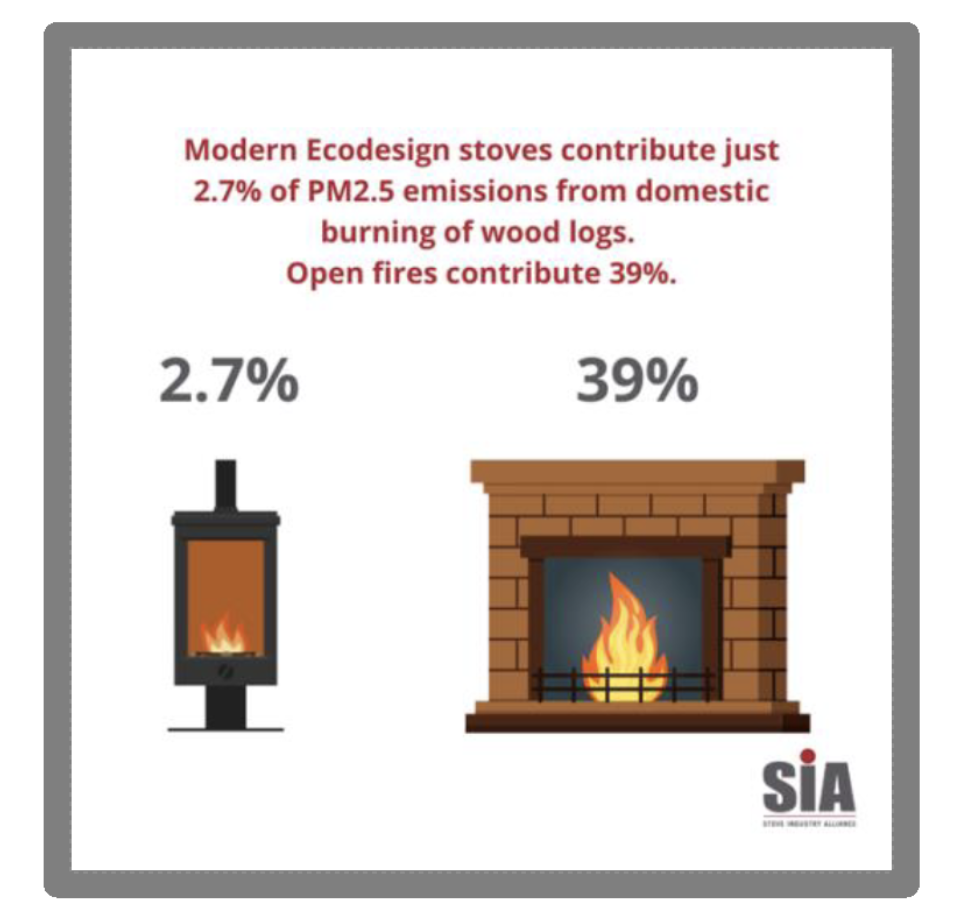The UK government has confirmed that wood-burning stoves will be allowed as secondary heating sources in new homes across England. Our industry, which has tirelessly focused on reducing emissions through the introduction of Ecodesign stoves in 2022, has welcomed the news.
In an announcement to the Stove Industry Association (SIA), the government clarified that they can be installed as secondary heating sources under the upcoming “Future Homes Standard.” This standard aims to make new homes more energy-efficient and ensure they rely on low-carbon heating systems.

Responsible Stove Use
Despite concerns from some health and environmental groups, research has consistently shown that wood-burning stoves, when used correctly, do not pose a significant health risk. The government itself acknowledged in its letter to the SIA that emissions from domestic burning can be greatly reduced if the proper fuels, appliances, and techniques are used. This includes ensuring that only well-seasoned wood is burned to minimise smoke and pollutants, a point that has been emphasised in past news updates we have provided.
This follows a letter sent by the SIA to the MHCLG in early February, co-signed by several organisations, including the Confederation of Forest Industries and the British Flue and Chimney Manufacturers Association. The letter sought to emphasise the key benefits of modern wood-burning stoves, such as their contribution to reducing carbon emissions, easing the strain on the energy system, improving air quality, and supporting sustainable energy solutions.
Andy Hill, chair of the SIA, expressed his approval of the government’s decision, stating that it would enable the continued use of wood-burning stoves in a manner that aligns with efforts to improve air quality and provide more flexible heating options for consumers. The announcement follows a similar move by the Scottish Government last November, which reversed its plan to ban wood-burning stoves in new homes due to public backlash.
While clean-air campaigners continue to call for stricter regulations on wood-burning stoves, especially in urban areas, emissions from domestic combustion have decreased significantly over the years, with harmful emissions falling by 72% since 1990 and by 18% between 2020 and 2023 alone. There is currently still too much of a broad-brush way of thinking that burning wood, regardless of the appliance, is bad. It’s simply not true. The diagram below demonstrates just how low PM2.5 emissions from an Ecodesign stove are compared to an open fire.

The Future Homes Standard is expected to be finalised later this year, with heat pumps and other low-carbon heating solutions likely to be the primary systems of choice for new homes in the future. However, the installation of wood-burning stoves as secondary heating sources will remain an option for homeowners.
Despite some who are opposed to wood-burning stoves, this development at such a high level is proof of the benefits that come with burning wood on an Ecodesign stove. With this in mind, here are a number of environmental benefits that come with a wood-burning stove that everyone should be aware of:
Renewable Energy Source: Wood is a renewable resource, meaning that as long as trees are replanted, wood can be sustainably harvested and used as fuel for stoves, unlike fossil fuels, which are finite.
Carbon Neutral: When burned properly, wood burning can be considered carbon neutral because the carbon dioxide (CO2) released is approximately the same amount as the tree absorbed while growing. This balance helps reduce overall greenhouse gas emissions.
Reduction of Waste: Wood-burning stoves can utilise waste wood, such as fallen branches and other wood by-products, helping forests to thrive.
Reduction of Energy Dependence: Wood-burning stoves offer an alternative to fossil fuels like gas and oil, thereby reducing reliance on non-renewable energy sources and minimising the environmental impact of their extraction and transportation.
Lower Greenhouse Gas Emissions: Ecodesign wood stoves that meet Ecodesign standards have advanced combustion technology, reducing particulate matter and carbon emissions compared to older models or open fires.
Localised Heating: Wood-burning stoves provide great localised heating, such as in one room, meaning that they can reduce the need for large-scale energy consumption used to heat entire homes, thereby lowering overall energy demands and costs.
Sustainable Forest Management: When sourced responsibly from well-managed forests, wood-burning stoves can encourage sustainable forest management practices that promote biodiversity and the health of ecosystems.








